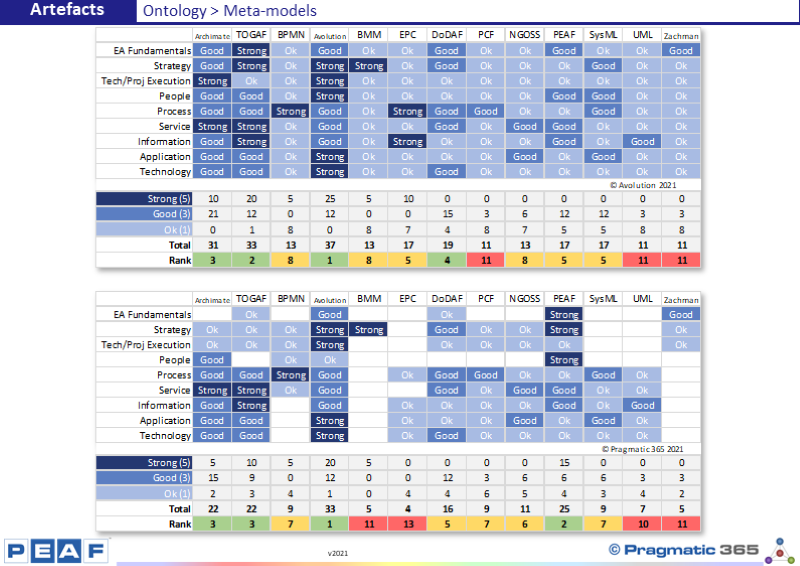
Here, we see two evaluations of various frameworks. The one
at the top was produced by Avolution (makers of the Abacus EA Modelling Tool).
The one at the bottom is Pragmatic's evaluation of each framework listed.
Each has been ranked by giving 5 points for
"Strong", 3 points for "Good" and 1 point for
"Ok". One thing you will notice is that in Pragmatic's scoring, there
are many empty cells. This is because if a framework contains no help in that
area, we mark it as blank rather than "Ok". The reader is encouraged
to do their own research and mark each framework for themselves and/or change
the scoring. Pragmatic provides the xls in its supplementary documents.
...to read more, please Login or Register